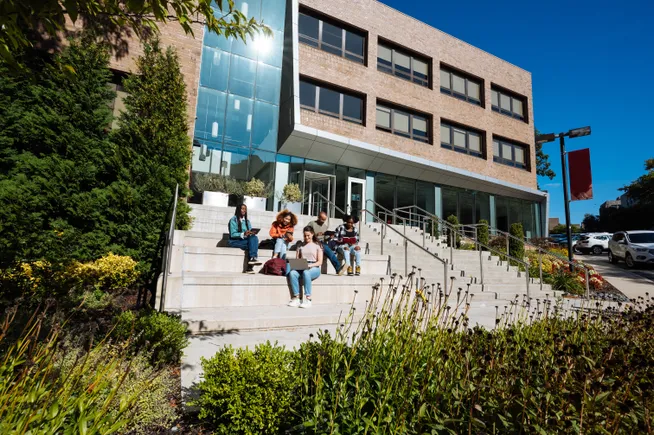Ricardo Azziz has held numerous executive positions in higher education and led the merger that resulted in Georgia Regents University, now Augusta University. He is principal at Strategic Partnerships in Higher Education, or SPH, Consulting Group.
He writes the regular Merger Watch opinion series on corporate restructuring in higher education.
The number of institutional closures continues to increase, recently occurring at a rate of about one new announcement per week.
Consistent with this trend, the number of higher education institutions that qualify for Title IV funds (able to receive federal financial aid, including Pell Grants, on behalf of their qualifying students) has declined significantly from 7,021 in the 2010–11 academic year to about 5,500 colleges today.
That translates into a loss of some 1,500 institutions — or roughly one-fifth of all Title IV institutions of higher education since 2010.
While some of these institutions merged, SPH Consulting Group data indicates that many more closed, including after failed merger attempts. This outcome occurs much too often because institutional leaders start exploring major restructuring options — including mergers — too late, when most assets and resources are exhausted. To emphasize a point that I make often: Mergers should not be considered the tactic of last resort.

Ricardo Azziz
Permission granted by Ricardo Azziz
But recently, as I speak with college leaders interested in exploring strategic partnerships and mergers, what is coming up more frequently is the added stress of the ongoing debacle surrounding the Free Application for Federal Student Aid.
To briefly recap, with the 2020 passage of the FAFSA Simplification Act, Congress required the U.S. Department of Education to make significant improvements in how federal student aid is awarded starting with the 2024-25 academic year.
The legislation’s goal of simplifying the FAFSA form was desperately needed. As a parent who had to fill three of these out, and who is by no means undereducated, I found the form extraordinarily confusing, lengthy and difficult to complete. Yes, the FAFSA needed a major overhaul.
The problem was that the new simplified FAFSA form, which now was tied to IRS reporting, was simply not ready for release. Top education officials were warned in 2020 that the redesign would be time-consuming, an issue likely worsened by the ongoing workforce deficit at the department.
Among other issues, this resulted in significant delays in sending colleges FAFSA applicant data, which is critical to forming financial aid packages and admission offers. These issues have resulted in a significant decline in completed FAFSA applications relative to last year.
It is not all bad news, however. The Education Department has provided some $100 million for additional support to colleges and universities in processing FAFSA applications and for direct help to students and their families.
Nonetheless, for most of the colleges and universities that rely on Title IV programs, these issues have not only worsened the enrollment challenges they already face, but also created significant uncertainty around which students are eligible for these funds and for how much — making financial and budgetary projections even trickier than before. While all Title IV schools are affected, the impact is much worse for smaller colleges, or precisely those institutions that are already endangered.
For example, a greater share of students at institutions that closed between mid-2004 and mid-2020, were receiving Pell Grants compared with those attending colleges that remained open, 54.7% versus 45.8%, according to a report from the State Higher Education Executive Officers Association and the National Student Clearinghouse Research Center.
In SPH Consulting’s own analysis, using federal data from 2022, we observed that the smaller the institution the greater the proportion of full-time, first-time undergraduates that were awarded Pell Grants. On average, Pell Grant recipients made up 61.2% of the student body at colleges with fewer than 1,000 students, compared with 35.3% for institutions with enrollment exceeding 20,000. Consequently, the impact of the FAFSA rollout missteps is hurting the smallest schools the most.
Smaller colleges tend to have larger shares of Pell Grant recipients
Average percent of full-time, first-time undergraduates awarded Pell Grants by college enrollment size
Many of these schools are already extremely fragile financially and even events which normally would not cause a school to close — say a ransomware attack or an unanticipated large bill due — can put them over the edge into insolvency.
These institutions do not have the additional resources to be able to underwrite unexpected additional student aid if the final FAFSA calculations do not support the federal aid expected or hoped for. And certainly, they are not resilient enough to be able to weather further declines in enrollment.
A recent calculation by Gary Stocker, founder of the College Viability App and a fellow at the Center for Mergers and Acquisitions in Higher Education, explored the potential impact of the FAFSA debacle on college finances.
Analysis of a sample of 549 private colleges from all 50 states which were enrolling fewer than 1,000 students indicated that even a modest 3% decline in tuition and fee revenue would result in average losses topping $3 million per institution in all but six states. Most smaller colleges would have trouble sustaining and compensating for this level of loss.
Another nail in their coffin.
The current FAFSA situation speaks — once again — to the urgent need for college and university executive leaders and governing boards to think proactively beyond the year’s budget and be willing to face the (mostly ugly) facts provided by 3- and 5-year projections.
They should be willing to seriously and deliberately consider major institutional restructuring, including mergers, and overhauling their business models — and to do so rapidly, not incrementally.
There are only so many more nails that vulnerable institutions of higher education can tolerate before their coffin is fully nailed shut.
#FAFSA #debacle #nail #coffin #vulnerable #colleges










